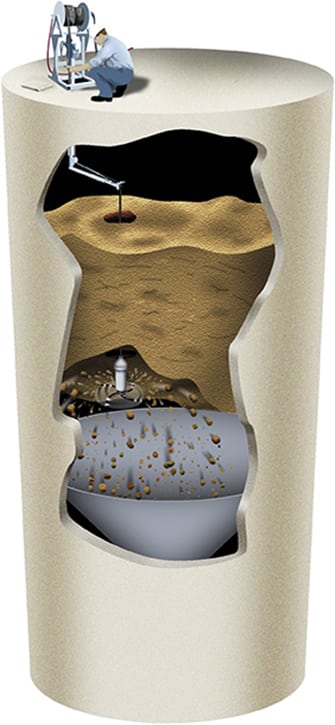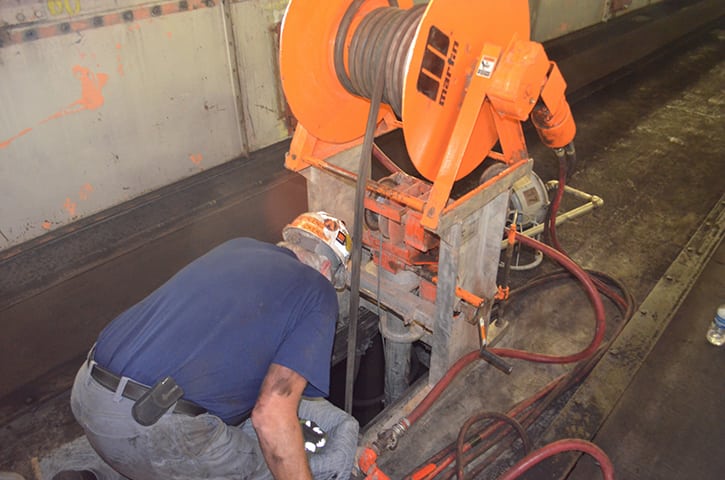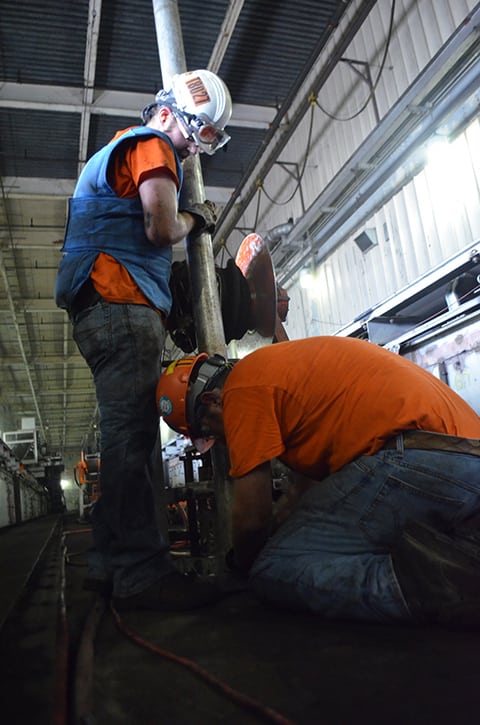New Options Allow Silo Cleaning Without Confined Space Entry
Anyone operating a coal-fired power plant has faced the challenge of keeping coal-handling equipment free of blockages and plugging. Not only do material flow problems interrupt smooth plant operations, but they also require dirty, sometimes dangerous, and often unscheduled maintenance work. As in many other industries, remote-controlled tools can help solve this problem.
Bulk material handlers faced with blocked vessels and plugged discharge chutes might consider a service offered by Martin Engineering that will remove build-ups, reclaim lost material, and restore design capacity and flow rates. In most cases, Martin Silo Solutions eliminate the need for confined space entry and hazardous cleaning techniques—such as explosives, water lancing, or air lancing—typically allowing the material to be recaptured and returned to the process stream.
Most cleaning projects are performed by technicians using a portable, remote-controlled tool that can be lowered into storage vessels through a manhole opening. Powered by compressed air, the heavy-duty whip can be equipped with a variety of flails and cutting edges to knock down accumulated material without damaging storage vessels. Abrasion-resistant steel chain is best suited for most applications, with nonsparking brass chain for combustible materials. Urethane flails can also be employed to protect lined vessels that could be susceptible to damage from metal tools.
 |
| 1. Whip illustration. Source: Martin Engineering |
“With this technology, the need for confined space entry is greatly reduced,” observed Martin Engineering Silo Sales Specialist Marty Yepsen. “The equipment can be set up quickly outside the vessel, and it’s portable enough to move easily around various bin sizes and shapes.”
 |
| 2. Technicians use remote-controlled equipment from the top of the vessel to safely address blockages. Courtesy: Martin Engineering |
The whip uses a modular boom arrangement that extends from 2 meters (7 feet) up to 8.5 m (28 ft) and can clean vessels up to 18 m (60 ft) in diameter and 68.5 m (225 ft) tall from a single central opening of just 450 mm (18 inches). The pneumatic cutting head delivers powerful whip action to remove buildup from walls. The hose reel separates from the boom assembly for transportation and set-up in tight spaces.
“There are competing systems that utilize hydraulics, but … they present the possibility of a fluid leak, which could contaminate otherwise-salvageable material,” said Martin Engineering Territory Manager Jim Densberger. “The whip requires no hydraulics; it … can usually be supplied from a plant’s existing air system.”
Potential damage to the storage vessel can also be an issue. Some cleaning technologies use very high pressure to blow air through a hose that’s simply dropped into an access hole at the top of the vessel. At the end of the hose is a tool with a restricted nozzle, which causes the “cleaning head” to thrash about randomly. While this technique works in large blockages, it provides little or no control, and as the head gets closer to the vessel wall, it is as likely to take out a chunk of the silo as it is to hit material for removal.
For extreme blockages where hardened lumps of material have plugged discharge chutes, silo-cleaning technicians also use the Martin Buster, which dislodges blockages by using the force of expanding CO2 gas. The technique employs nonexplosive generators that cause rapid gas expansion to fracture chunks and compacted material, opening the discharge and restoring normal flow.
When bridged or arched material creates a no-flow condition, technicians can utilize the Martin Drill to bore through tough clogs. The drill’s hydraulic action drives its way through blockages, clearing a pathway at depths up to 45 m (150 ft).
 |
| 3. Removing build-ups without the need for confined space entry or hazardous cleaning techniques. Courtesy: Martin Engineering |
Martin Engineering’s Silo Solutions are provided as a turnkey service. The company’s fully equipped teams bring all required equipment and personnel directly to customer sites. Many facilities are able to remain in operation during vessel cleaning, but when conditions require a shutdown, technicians work to accommodate customer schedules.
—Alan Highton, U.S. sales manager, Martin Engineering